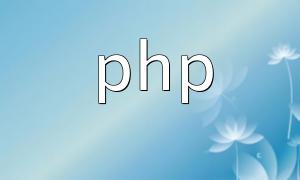There are several syntax differences between PHP7 and PHP8. These differences not only enhance the functionality of the language but also improve code readability and robustness. In this article, we will explore the main syntax differences between PHP7 and PHP8 to help developers better understand these changes.
Introduced: PHP 8
Function: The null coalescing operator (??) checks if a variable is null. If it is null, it returns the second operand; otherwise, it returns the first operand. This simplifies code and avoids multiple if conditions.
Introduced: PHP 8
Function: The match expression is a more concise syntax for controlling flow, similar to the traditional switch statement, but with additional features such as returning values and strict comparison. It makes code more compact and readable.
Introduced: PHP 7.0
Feature: PHP7 introduced scalar type declarations, allowing developers to explicitly define the type of parameters, such as int, float, string, and bool. This feature improves type safety and reduces runtime errors.
Introduced: PHP 7.0
Feature: PHP7 also supports return type declarations, allowing the specification of return types for functions. This is crucial for code maintainability and predictability, improving the robustness of PHP code.
Introduced: PHP 8.0
Feature: PHP8 introduced union types, allowing a parameter or return value to support multiple types. This provides greater flexibility for developers and allows for more precise type control.
Introduced: PHP 7.4
Function: The negation operator (!) simplifies the inversion of boolean values. This improvement enhances the simplicity and readability of the code.
Introduced: PHP 8.0
Feature: PHP 8 introduced readonly properties, which make it easier to define properties that can only be assigned once, during object creation. These properties cannot be modified later, ensuring data immutability.
Introduced: PHP 8.0
Function: PHP 8 added the str_contains() function to check if one string contains another substring. This makes string matching operations more direct and convenient.
Introduced: PHP 8.0
Function: The array_is_list() function checks if an array is a list, meaning its indices are continuous and start from 0. This feature makes it easier for developers to check the structure of arrays.
Summary: PHP7 and PHP8 have several improvements in syntax and functionality, with PHP8 introducing many new features such as match expressions, union types, and readonly properties. These new features make PHP code more concise, powerful, and maintainable. Developers should fully understand these differences when upgrading to PHP8 to take full advantage of the benefits of the new version.








